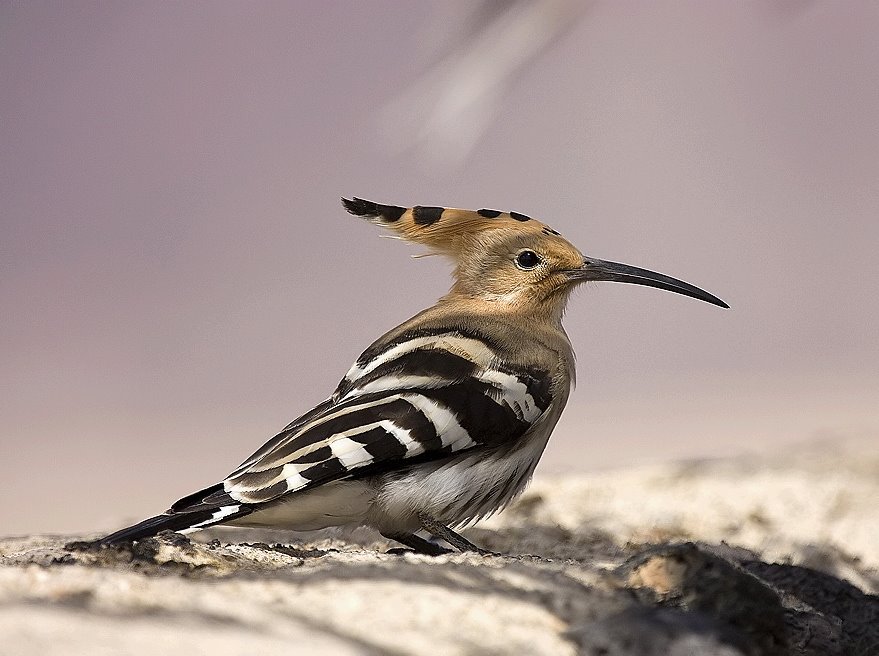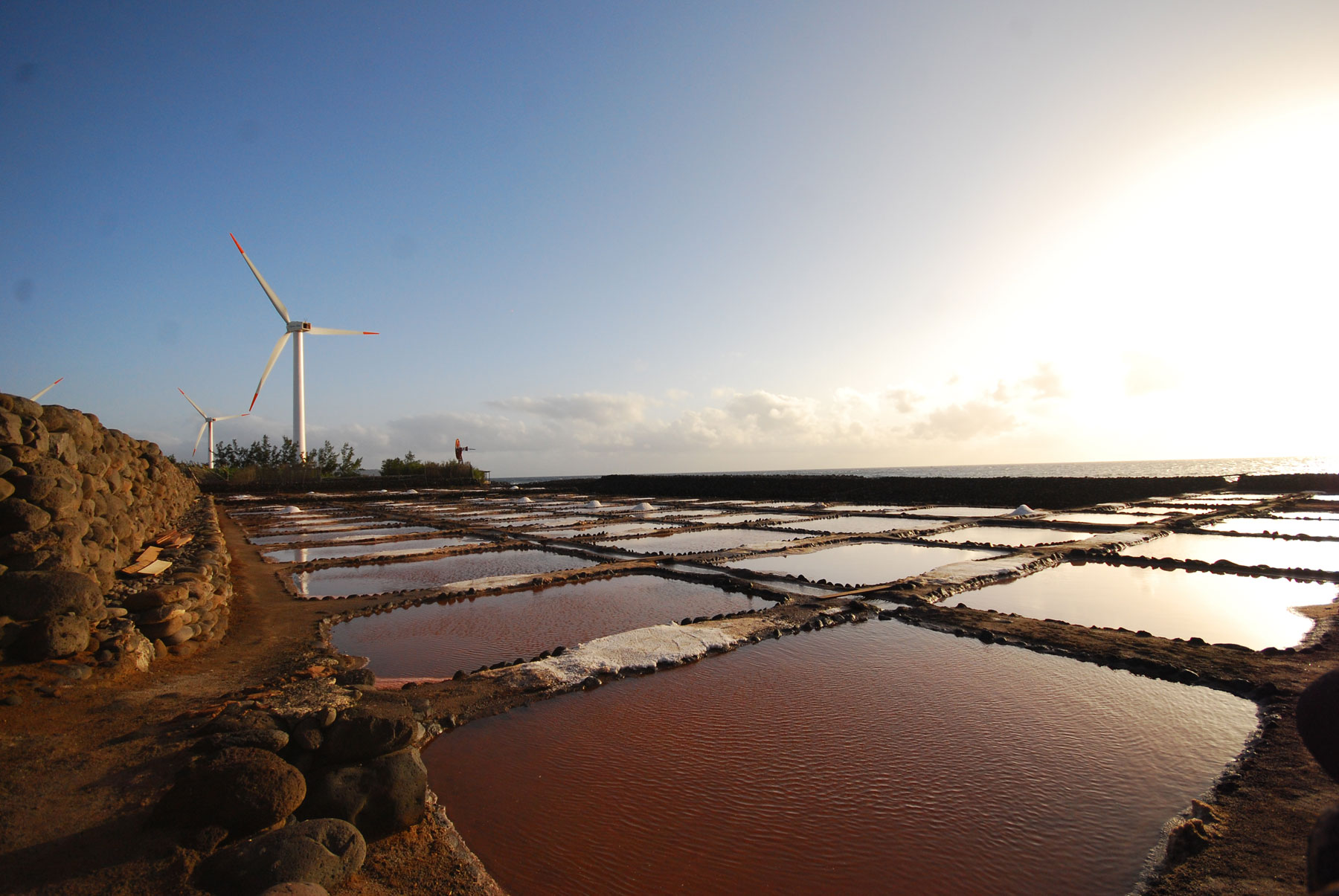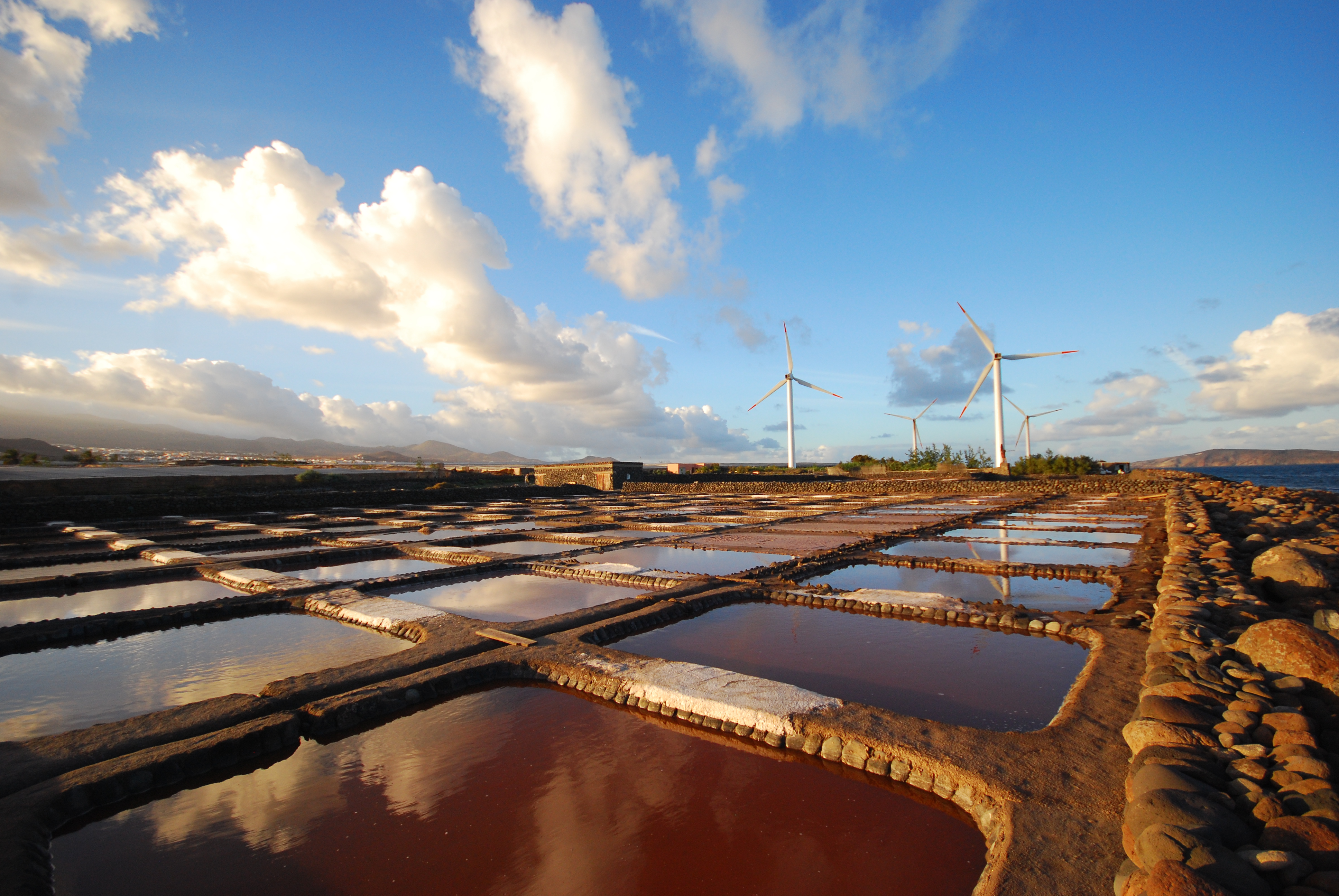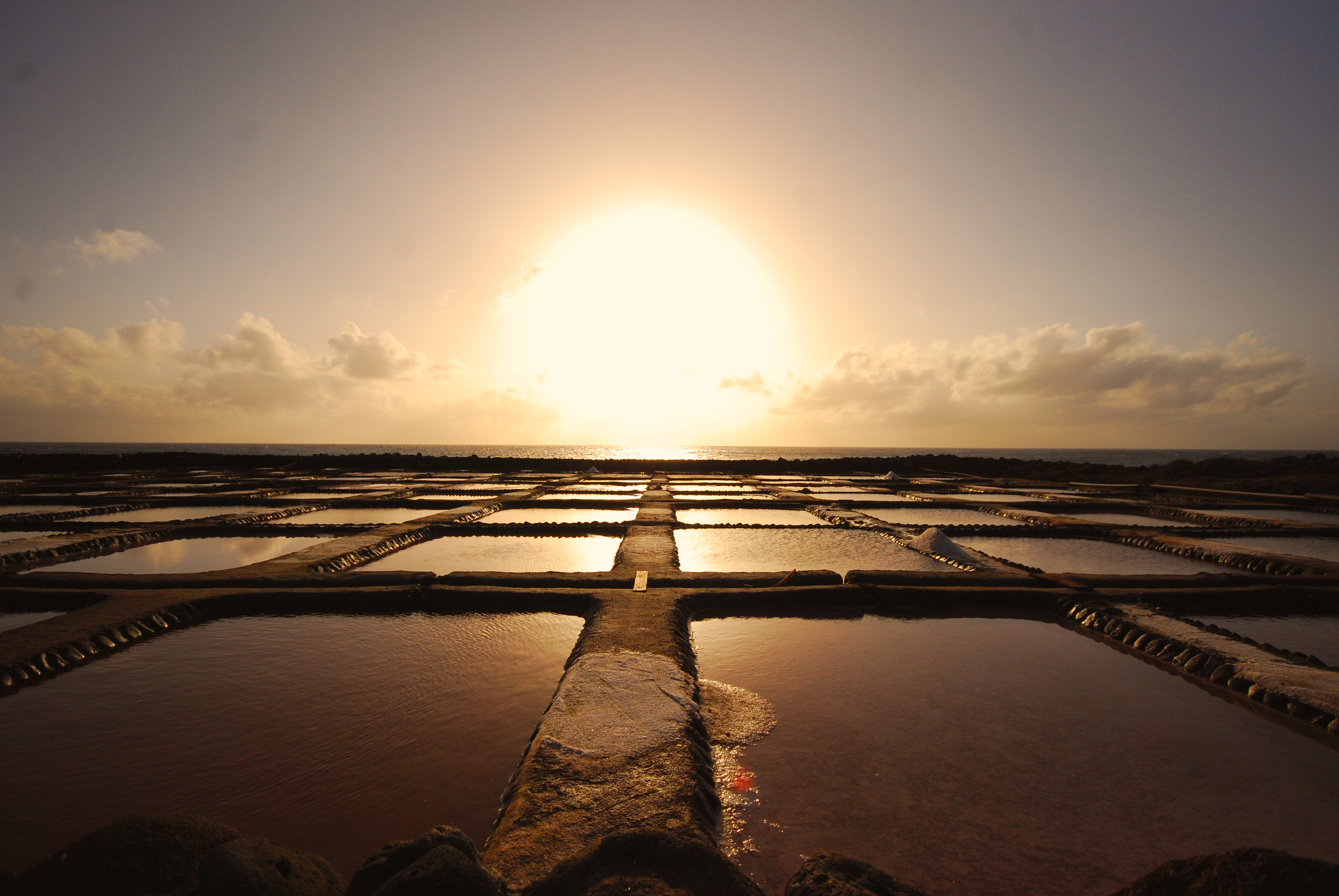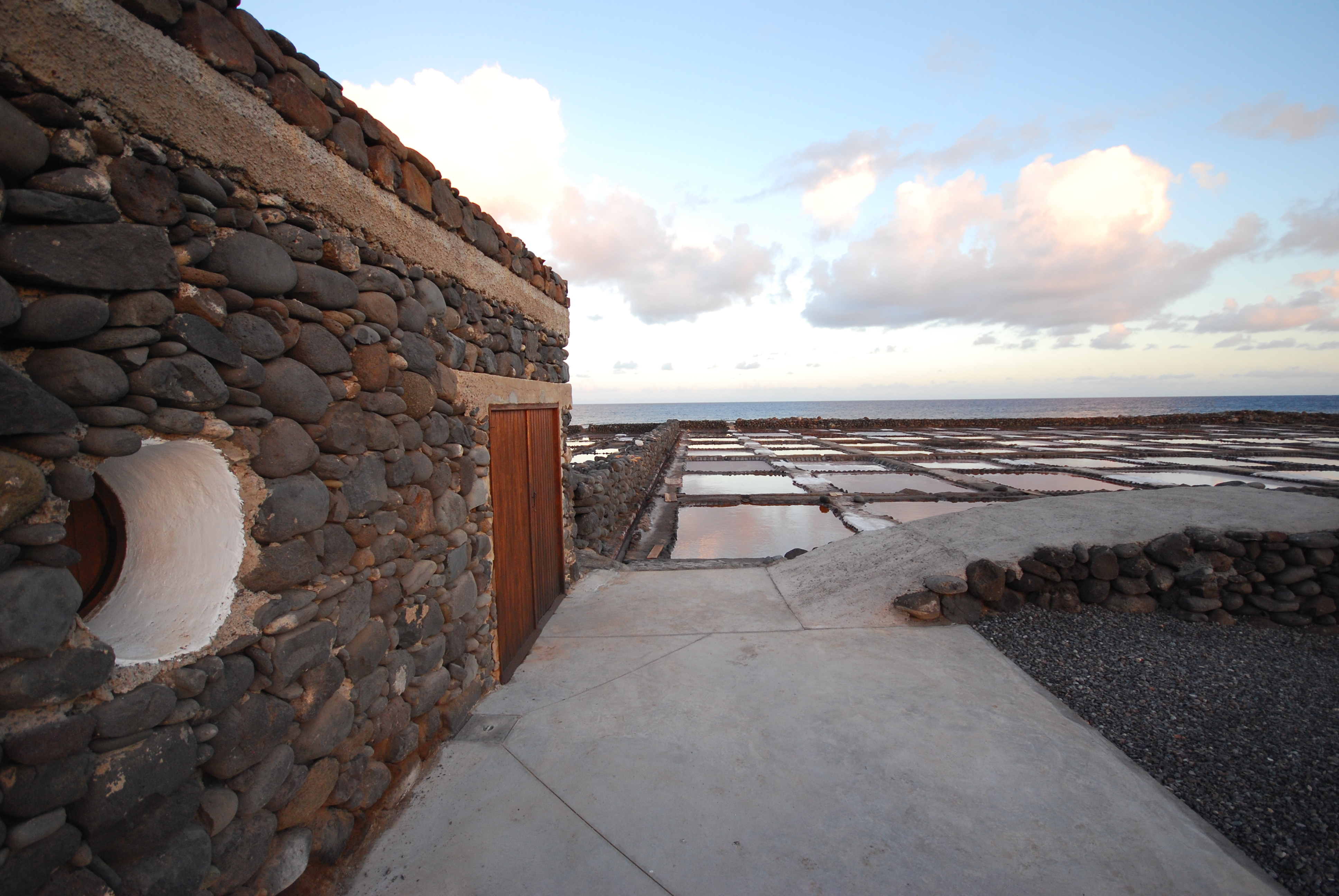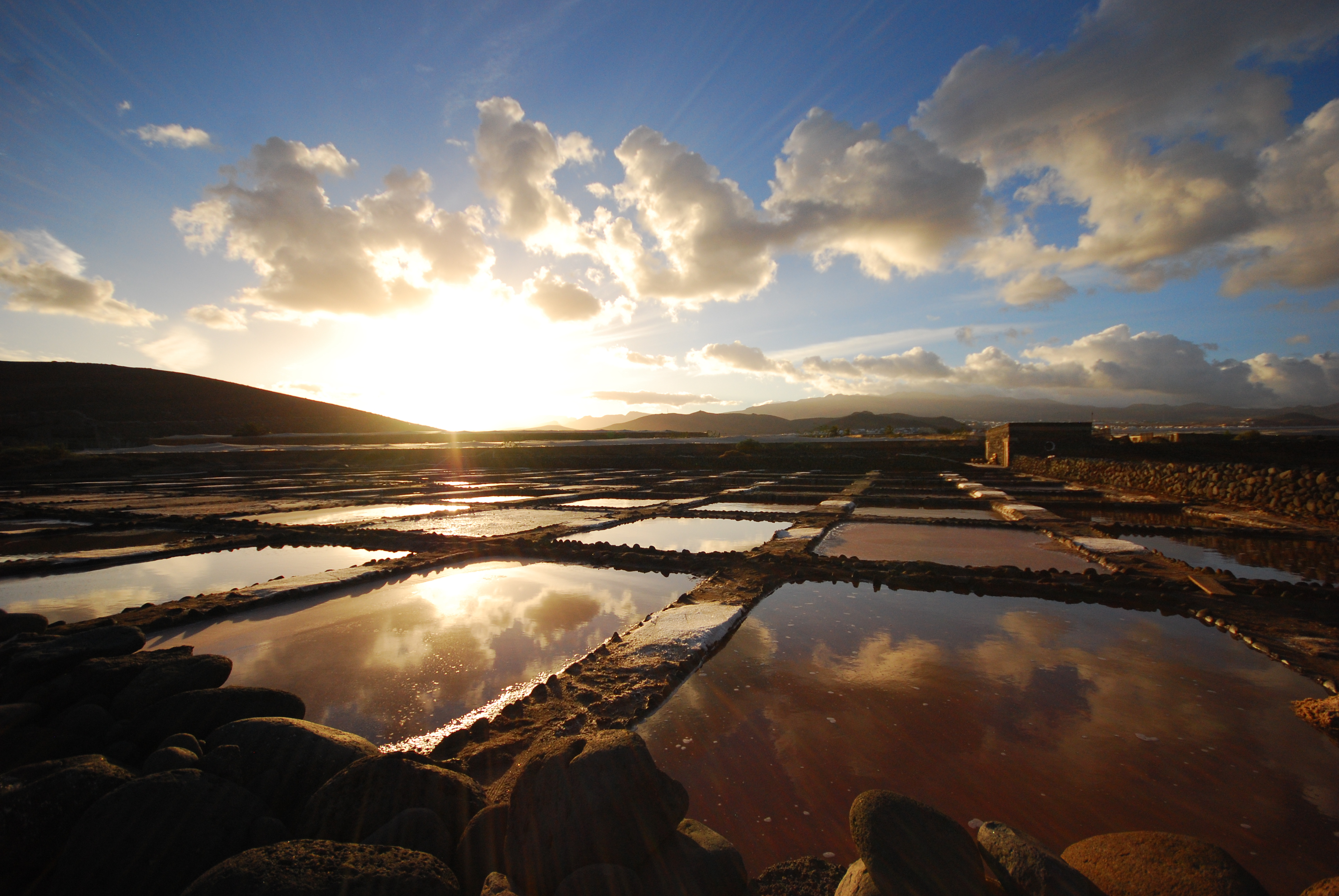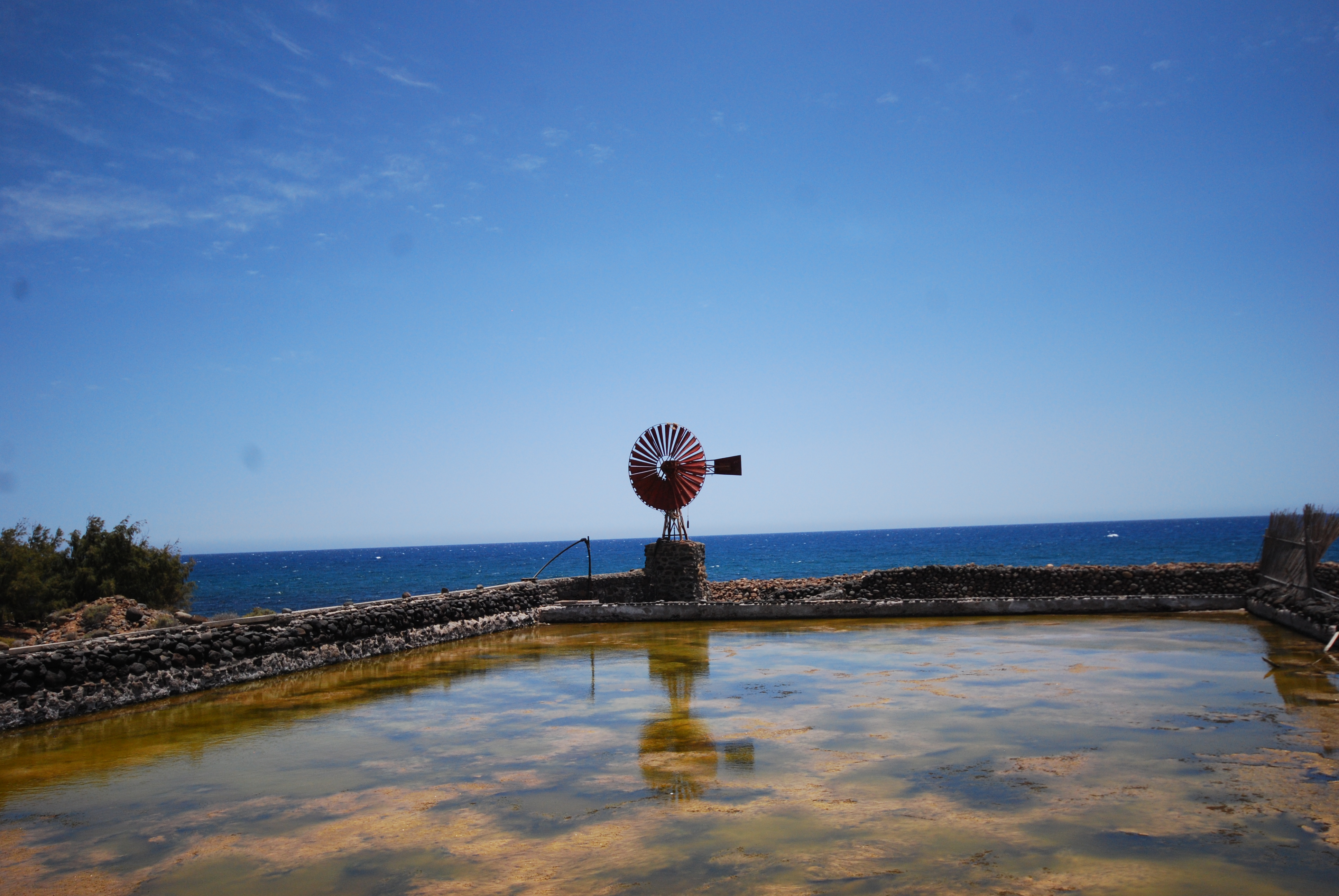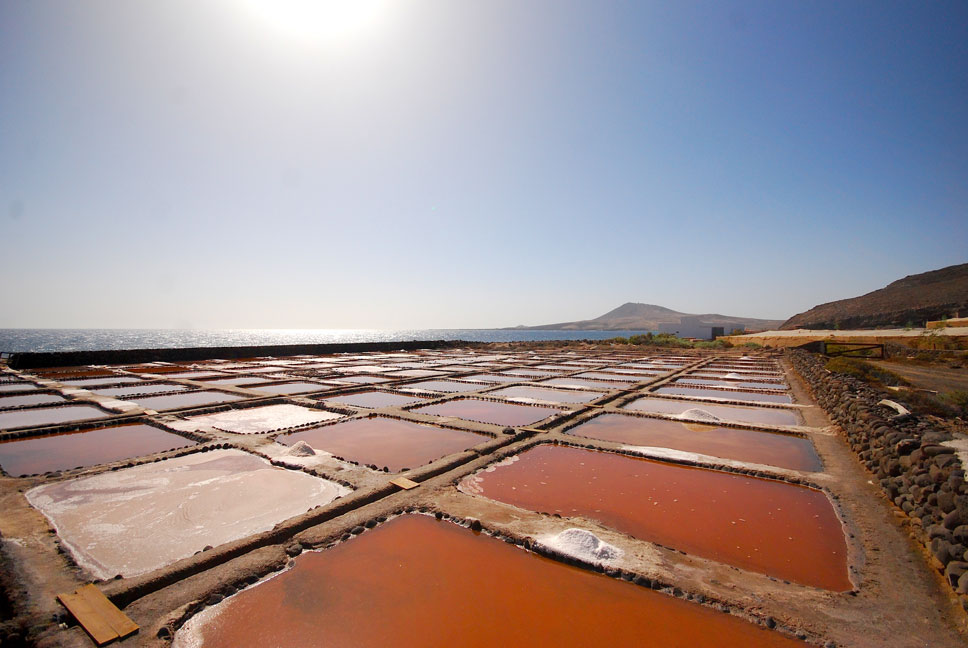La referencia salinera más antigua de Gran Canaria se remonta al siglo XVI cuando se extraía la sal de los charcos naturales anegados por las mareas vivas. Se desconoce su origen exacto pero ya desde finales del siglo XVII se tiene constancia de la existencia de varias salinas primitivas sobre roca. El verdadero desarrollo de la sal como industria se produce en el Costa Sureste de la isla de la mano de los señores de la tierra y estrechamente vinculadas a la pesca. A esta época pertenece el conjunto de unos 8 ingenios salineros que se construyeron antes de 1800 y de las que apenas subsisten restos.
El segundo impulso salinero se produce ya entrado el siglo XIX, en el resto de los municipios del Sureste, Santa Lucía, Agüimes y Telde e incluso Las Palmas. De las 14 salinas antiguas de barro de Gran Canaria, únicamente se mantienen en activo cuatro de ellas, como exponente de la rica tradición salinera, siendo curiosamente la isla que más salinas mantiene en funcionamiento.
Destaca el hecho de que su mantenimiento haya sido posible gracias a la continuación de las sagas familiares de salineros poniendo de relieve que las salinas de hoy más que una industria son un auténtico legado.
The oldest salt reference of Gran Canaria dates back to the 16th century when salt was extracted from the natural pools flooded by the living tides. Its exact origin is unknown but since the end of the XVII century there is evidence of the existence of several primitive salinas (saltworks) on rock. The true development of salt as an industry takes place in the Southeast Coast of the island, hand in hand with the lords of the land and closely linked to fishing. To this time belongs the set of about 8 saltworks mills that were built before 1800 and of which hardly remain remains.
The second saline impulse occurred in the nineteenth century, in the rest of the municipalities of the Southeast, Santa Lucia, Agüimes and Telde and even Las Palmas. Of the 14 ancient mud salt flats of Gran Canaria, only four of them remain active, as an exponent of the rich salt tradition, being curiously the island that has more salinas in operation.
It stands out the fact that its maintenance has been possible thanks to the continuation of the family sagas of salineros emphasizing that the salinas of today more than an industry are a true legacy.
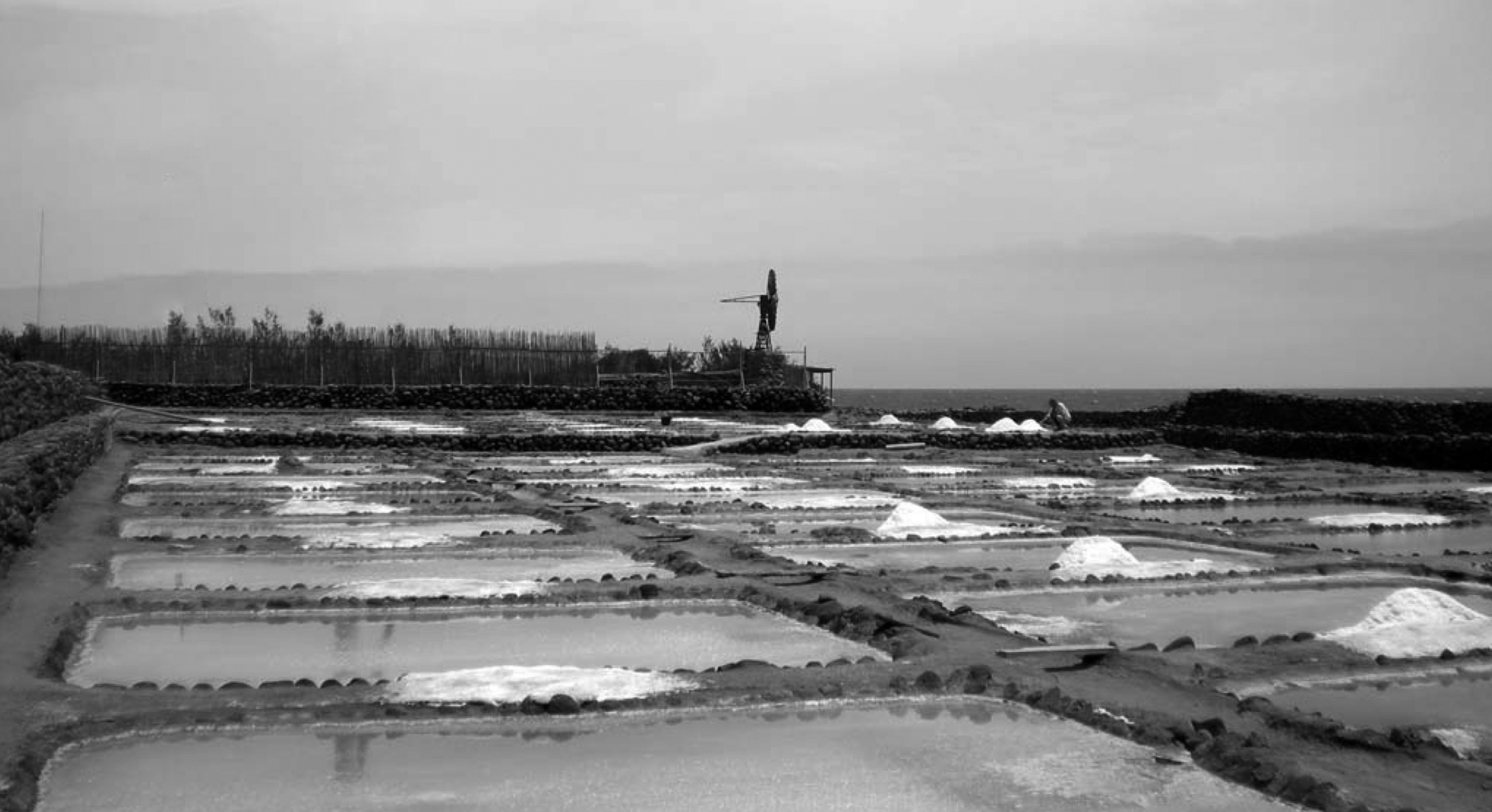
Salinas de Bocacangrejo
Semi-escondida entre la desembocadura del barranco de Guayadeque y la playa de Vargas, se encuentra las salinas de “Boca Cangrejo”. Su nombre deriva de la cantidad de cangrejos que habitan este trozo del litoral costero del municipio de Agüimes.
Esta salina tiene más de 100 años de antigüedad, fueron construidas a finales del siglo XIX, en torno a 1889, en pleno auge salinero de la costa suroeste. Su tipología responde al modelo de “salina antigua de barro” y es una de las pocas salinas de Gran Canaria que conserva intacta su clásica construcción de antaño, sus primitivas paredes, tajos centenarios de almacenamiento, cristalización y vaporización de la sal, su canalización de aguas limpias desde el mar.
Su antiguo molino de viento de aspas circulares, de más de 150 años fue derrumbado por una fuerte tormenta en 2018. Antiguamente esta salina tuvo su bien ganada fama con el calificativo de “despensa de la isla” en calidad y cantidad de sal. En esa época era transportada a lomos de burros, mulos y carretas por caminos y senderos, pasando por la zona agrícola de La Florida vía Carrizal y desde allí a Ingenio, Agüimes, Telde, Las Palmas y zona sur. La sal era utilizada como moneda. Existían intercambios de sal por alimentos de la tierra.
Semi-hidden between the mouth of the Guayadeque ravine and the beach of Vargas, there is the salt pans of “Bocacangrejo”. This name derived from the amount of crabs (cangrejos) that inhabit this part of the coastal coastline of the municipality of Agüimes.
This saltworks are more than 100 years old, they were built at the end of the XIX century, around 1889, in full saline boom of the southwest coast. Its typology responds to the “ancient clay saline model” and is one of the few salt flats of Gran Canaria that preserves intact its classical construction of yesteryear, its primitive walls, centenary staves of storage, crystallization and vaporization of salt, its channeling of its clean waters from the sea.
The old windmill of circular blades, more than 150 years old was destroyed by a storm in 2018. Formerly this saline had its well-earned fame with the qualification of having been the “larder of the island” in the quality and quantity of salt, being at that time transported on the backs of donkeys, mules and carts along roads and paths, passing through the agricultural area of La Florida via Carrizal and from there to Ingenio, Agüimes, Telde, Las Palmas and south. At that time, salt was used as currency. There were exchanges of salt for food from the land.

Esta salina posee un rico historial, contado a través de generaciones de salineros arrendatarios. Las explotaciones salineras, propiedad de Don Rafael Martel Rodríguez, las llevó toda una vida Juanito Lozano, les siguió Sebastián Sánchez Cabrera, posteriormente siguió su explotación Chano Cruz Viera e incluso Juana Sánchez Cabrera, su mujer, también de familia de tradición salinera.
This saline has a rich history, counted through generations of tenant owners and tenants. The salt mines were carried by Juanito Lozano for a lifetime, followed by Sebastián Sánchez Cabrera, followed by his exploitation of Chano Cruz Viera and even Juana Sánchez Cabrera, his wife, also from a family with a salt tradition.

Este área se caracteriza por una vegetación dominada por un matorral achaparrado de especies halófilo-psamófilas. Además de la importancia que la zona presenta como zona húmeda artificial, las salinas son lugares idóneos para la observación de gaviotas, abubillas, charranes y sobre todo aves limícolas. Además, son los mejores lugares para la reproducción del chorlitejo patinegro y la cigüeñuela común.
This area is characterized by a vegetation dominated by a scrub of halophylophyllous species. Apart from the importance that the area presents as an artificial wetland, the salt mines are ideal places for the observation of seagulls, hoopoes, terns and especially waders. In addition, they are the best places for the reproduction of the black-backed plover and the common stilt.



